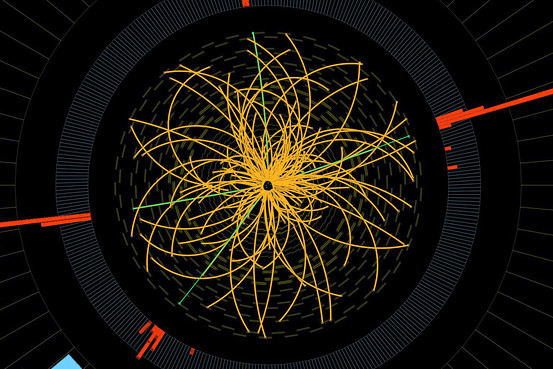
The Higgs boson is crucial to the current view of how the universe is structured because it is linked to a mechanism that confers mass to elementary particles. It thus helps to explain the presence of stars, planets and other cosmic bodies.
The data collected so far "are magnificent and to me it is clear that we are dealing with a Higgs boson though we still have a long way to go to know what kind of Higgs boson it is," said Joe Incandela, a spokesman for the European particle-physics laboratory CERN, which led the Higgs hunt.
While the data strengthens the likelihood that the elusive Higgs boson has been found, further number-crunching is needed to claim a conclusive discovery.
The latest analysis is based on 2½ times more data than was available in July, when CERN first made the announcement that it may have pinpointed the existence of the Higgs boson. The new data was presented at a physics conference being held in the Italian town of La Thuile.
Particles like the Higgs have to be found indirectly, by hurtling them to near light speed and then smashing them together to generate other subatomic entities. An analysis of these smash-ups indicates the mass of the particle being sought.
The Higgs boson is the only particle theorized by the standard model of physics that hasn't been conclusively observed in an experiment. The model describes how matter is built and how particles interact.
The theory suggest that a Higgs boson should have no spin. In addition, the standard model says the particle also should have positive parity, which is a measure of how its mirror image behaves.
The latest CERN data suggests that the newly discovered particle appears to have no spin and positive parity.
Nonetheless, it remains to be seen whether the new particle is the Higgs boson of the standard model, or one of several other bosons predicted by other theories of physics.
"Finding the answer to this question will take time," CERN said in a statement Thursday.



big bang cosmology will eventually be refuted.